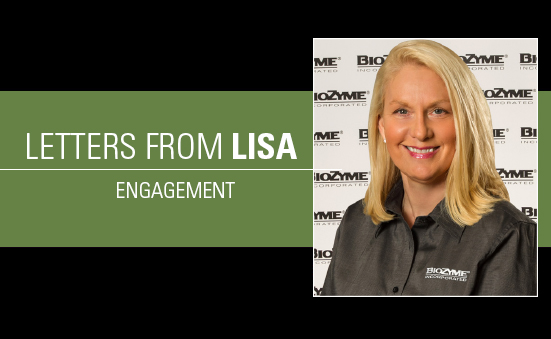Customer service isn’t just a catch phrase for Spring Canyon Feeds. It is a family value passed from one generation to the next. Kari Schultz, along with her brother and dad, Tyson Mann and Bruce Mann, own Spring Canyon Feeds, serving farmers and ranchers in the community surrounding Kirk, Colo., where she grew up.
“We’re not just selling a product. We strive to provide. It’s in our blood,” Kari said. “Even growing up, if we had something pressing to get done today, and a neighbor called and needed help, my dad would stop what he was doing and put everyone else first.”
That is the kind of service that Kari and Spring Canyon has provided and continues to provide since the dealership started in 2014. Kari is engaged with her customers, understands their livelihoods, and works with the resources available to her through BioZyme® to help her customers thrive.
Kari started feeding the VitaFerm® products in 2014, but with no local dealer former ASM Brad Hill convinced her it would be a good little “side business” to go along with her farming and cow-calf enterprise.
About the same time the Spring Canyon dealership started, Megan Douthit-Downey, Saint Francis, Kan., had heard about VitaFerm products from her veterinarian. Although 50 miles away, Kari was still the closest dealer who offered all the product lines Megan was looking for, but more importantly provided her great services.
“Kari is a rock star,” Megan said. “She comes out and we tell her where our hay piles are and what cuttings they are from. She core samples everything and submits samples to Dr. [Susan] Day, and Dr. Day puts rations together for us. For us, it’s about getting the most bang for our buck. The products are not always the cheapest, and not always the most expensive, but customer service goes a long way.”
As a cattle producer, Kari understand the value of forage sampling and supplementing nutrition when and where needed. She appreciates the services that BioZyme provides its customers, and more of her customers are learning to appreciate those services too.
“We believe whole-heartedly that if you don’t know what you’re feeding your cattle, you don’t know what they need. We need to make sure what they are eating is actually meeting their requirements for them to perform at their highest potential, it is necessary to know what they are lacking and provide them with those nutrients,” Kari said. “BioZyme is great at providing that service to us. I really enjoy Susan’s frankness. She lets us know what we need or what we don’t need in our rations.”
Kari said many of the more seasoned producers in her area, who at one time didn’t think their cattle needed a mineral package, are started to see the value in the products she sells, especially with the Amaferm® advantage. She said they understand that Amaferm helps their cattle put on more pounds through increased intake, digestibility and absorption, and to the producers, more pounds equal more dollars.
“Kari’s product knowledge is incredible,” said Jake Warntjes, ASM who covers Eastern Colorado, Western Kansas and Western Oklahoma. “She studies the nutrition side of things, what Amaferm will do for the animals and knows the research that backs it.”
Jake is also complimentary of her customer service skills, saying Kari is good at getting customers connected to the resources they need, such as himself or Susan for nutrition needs.
In December 2017, Kari had the opportunity to expand those services even further. She, her dad and brother purchased the feed store in their small community, and her “side business” has turned into full-time business and a service for the ranchers of Yuma County, where cows out-number people.
At the store, which is open 6 days a week, Kari sells most everything for livestock, including the BioZyme product lines, tags, sorting sticks, medicine, gloves, boots, rodent and pest control. She also carries some pet foods and small pet items. And she is expanding the services her store provides.
She has worked closely with a veterinarian to get some prescription medicines on-hand so if a rancher needs something, the vet can work through her to get one animal treated. She is also working with a Genex rep and A.I. tech to promote her services in the area. She hopes to eventually add marketing services to her store.
Keeping animals healthy and growing and keeping customers happy and returning are ways that Spring Canyon Feeds stays engaged with their customers.






